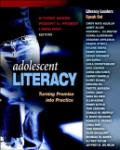This chapter, written by one of the editors in the book, Linda Rief, outlined some practical lessons, structures and tools that can be used by teachers in the writing program. She wrote a list of 'commonsense' considerations that we as teachers need to think about all the time when we are designing writing activities and working with our students. I'll summarize and comment on some of the common sense things that Reif writes that made a connection:
1. There is no one process that defines the way all writers write. Wow this is a biggy for me! My pre-writing stage is all in my head - I never put things down on paper. I draft and revise and edit as I go along. Then I let it sit, and then go back and go at it again. Are all stages of the writing process evident? Yes but not in any kind of order. How often do we ask kids to have evidence of several drafts as well as the finished product? I would have to make fake drafts to satisfy this requirement. Reif suggests a 'process paper' where she asks students to reflect on the process in detail (she has an example form in the chapter). This to me makes a lot of sense and also fulfills those metacognitive expectations that we have in our curriculum documents.
2. Writers need, and want, to write for real reasons for a real audience. This makes a lot of sense because writing is such hard work (it is - I've known this for a long time. Writing is the most difficult thing for me to do, so I better have a good reason for doing it). Reif suggests finding ways to take their writing public. That's why I think blogs and wikis and of course The Pluralist are such good authentic venues for student writing.
3. Writers need choice, time and models of good writing. How much of what we ask students to do has no connection to them (i.e. the five paragraph essay: a literary criticism on...). Do we take the time to look at models of the genre we want them to write in (both good models and bad) and ask them to think about what makes a good piece of writing in a particular genre. And do we put this list of criteria up so the can see it as a reminder? Does this take time? Sure does but is this not what we want students to do - be critical thinkers?
There are many more common sense items and suggestions for teachers but I want to move on the next section in the chapter.
The section What Stands in the Way of Common Sense had a lot of sense in it. One of the things that really resonated with me is that we tend not to realize the impact of visual tools in writing and we tend to de-value them because they are not word or text based. Reif says that we need to use drawing as thinking. We ask readers to visualize the text. Reif points out that doesn't it make sense that some writers will need to visualize what they want to write first? She suggests that when we don't honour drawing as a way of thinking that we can prevent success for those students who need to use a visual representation to plan and draft their writing. She suggested that students draft a 'tellingboard' (really its a comic in panels) for their writing. They draw the story (and I suggest drawing it using post-its so the writer can move panels around and add to the story easily during revision) as a first draft, share it with others who ask questions (just as they would with a written draft), add panels as needed for a second draft and then the third draft would be the story written in words. Students could go right to the word processor when they are finally ready to write using words. If you have reluctant writers, maybe it's because they need to draft in pictures first - a full comic with panels and stick drawings. Do you need to do this with all students? No, but what a way of differentiating for those who need it. Another reason to really get to know your students.
I really enjoyed this chapter - it made a lot of sense!
Sunday, September 21, 2008
Subscribe to:
Posts (Atom)
